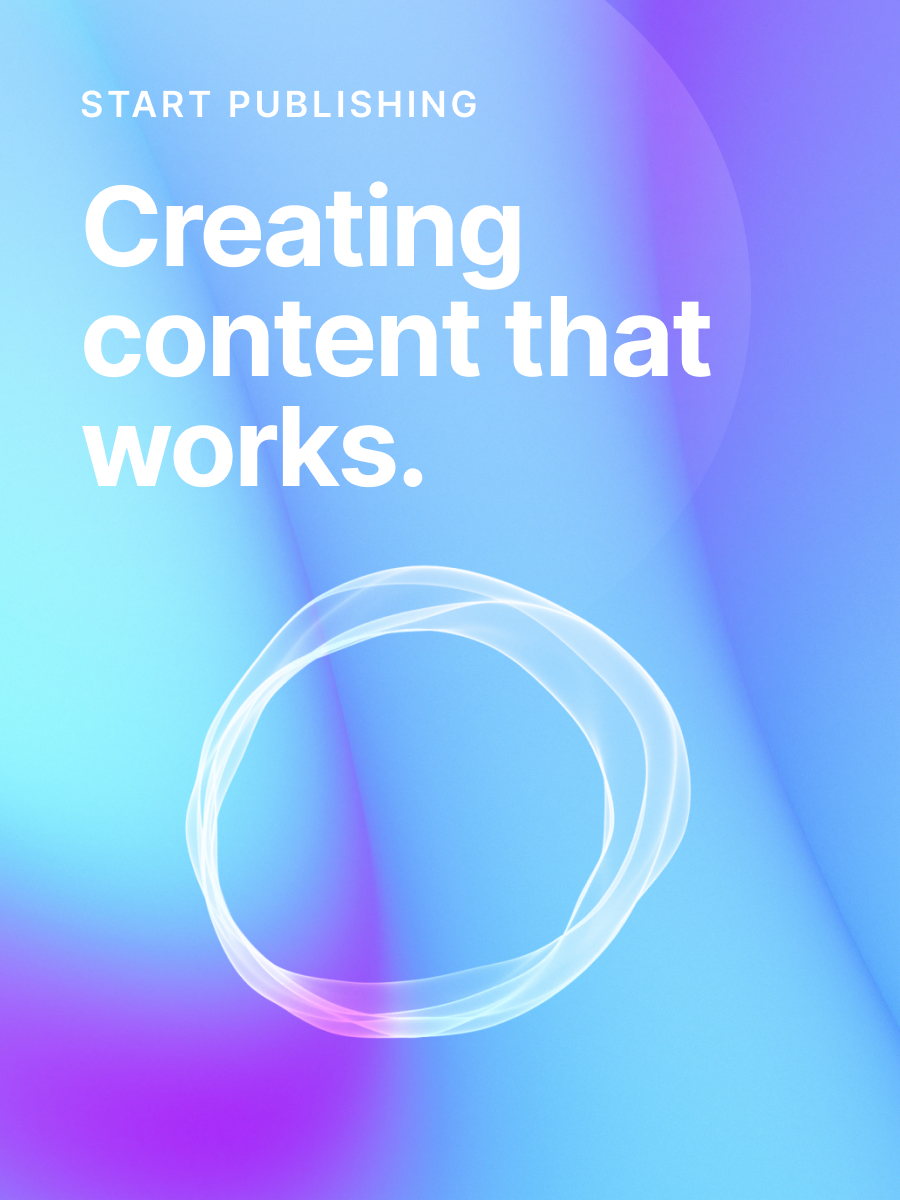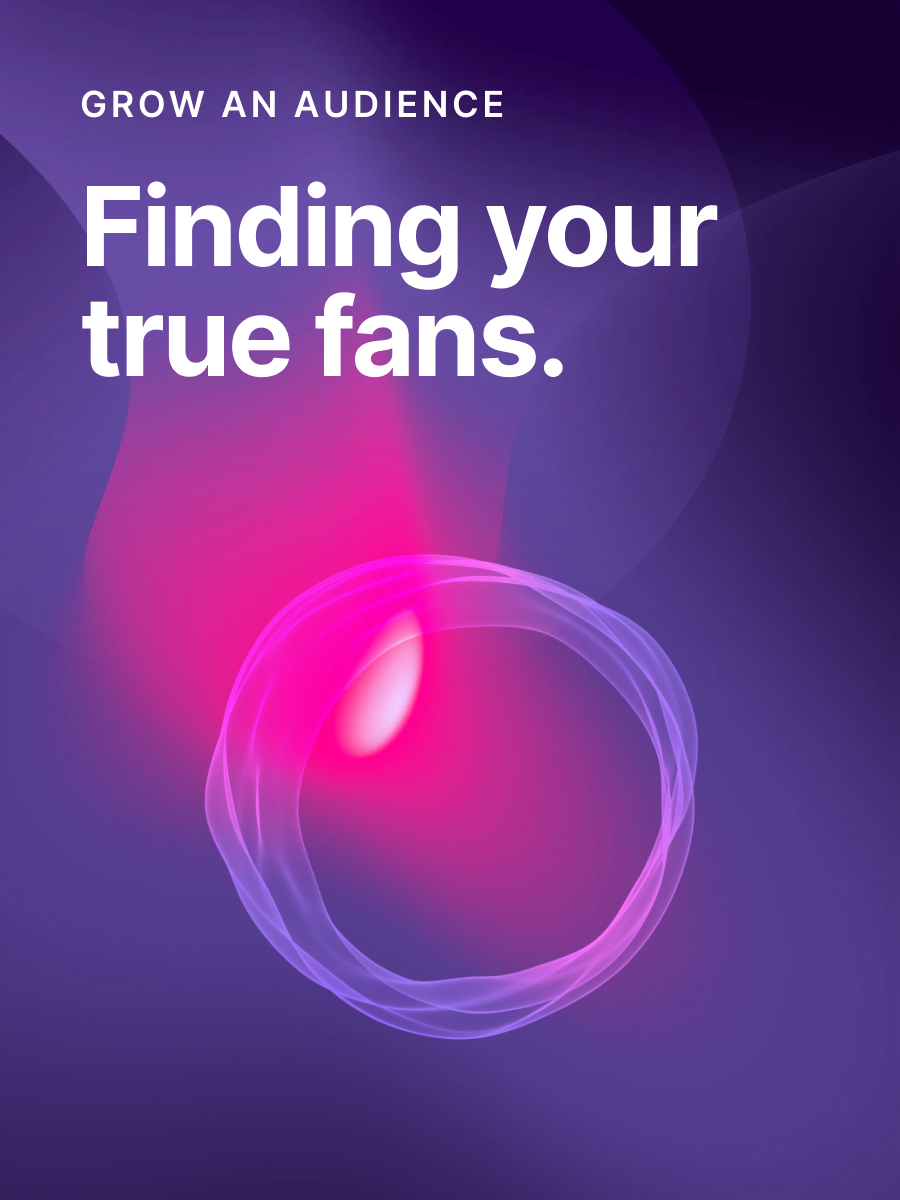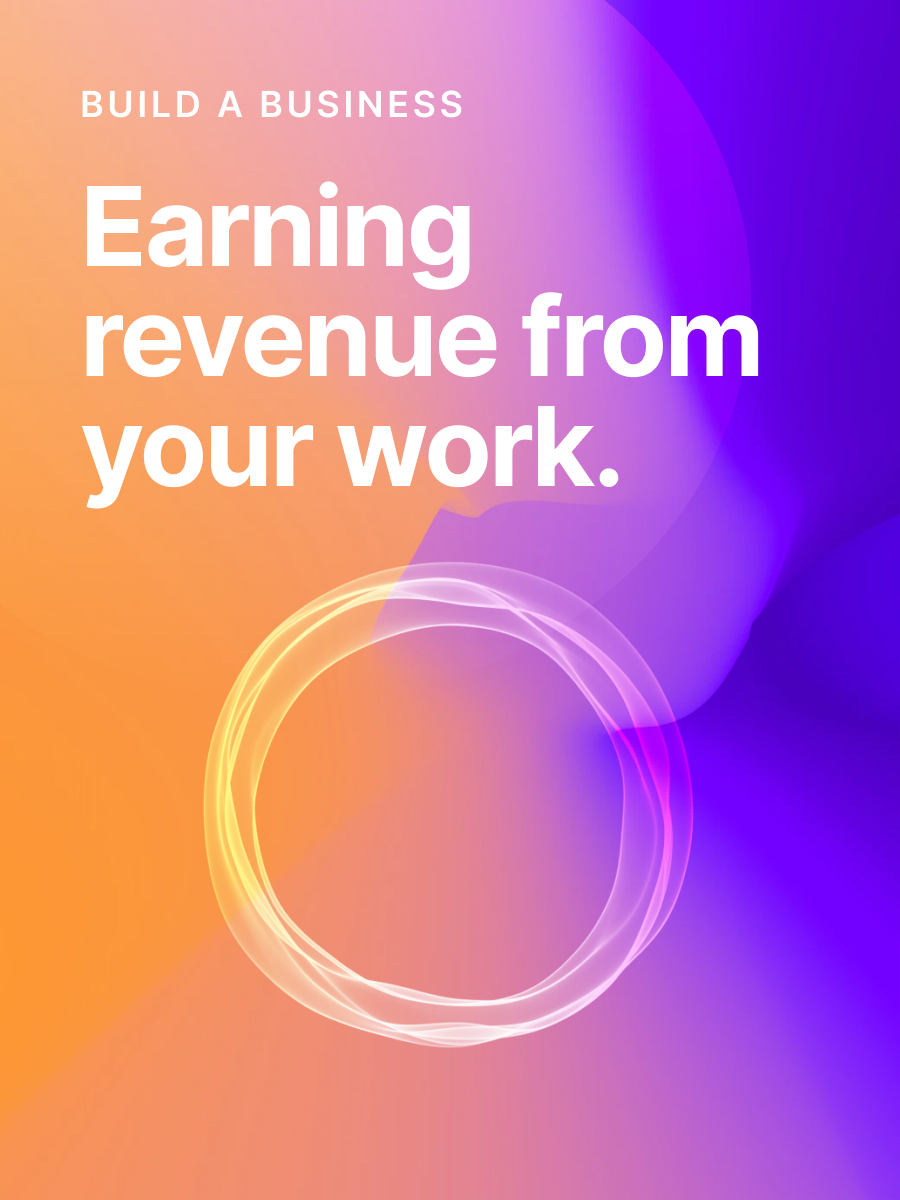🦄 Proven ways to refine your marketing copy
Is it just us, or is it often harder to write a one-liner for your marketing than it is to write an entire newsletter? Marketing copy is super important, it's your elevator pitch to the world, but it's not always easy to write — so we've dedicated this whole issue to actionable tips for better copywriting.
💬 In this week's issue:
- Ever struggle with your subject lines? Find out how combining best practices with a little inspiration from AI can help make your life easier.
- "So what?" Learn how to take your copywriting to another dimension with this simple question and unearth your core benefits.
- Copywriting is like math, sometimes. Use this formula to improve your calls to action.
Was this email forwarded to you? Subscribe here!
How to write great subject lines

Email subject lines are important because they're the first thing your audience sees when they discover your content in their inbox.
Delivering great newsletters consistently goes a long way toward keeping your readers engaged, but so does each individual subject line. People are busy, and even your most loyal readers might skip a newsletter if the subject doesn't pique their interest.
Here's a repeatable process you can use to avoid subject-line-writers-block and generate more compelling opening lines for your emails.
1️⃣ Generate ideas
AI tools like ChatGPT provide a helpful starting point when you're staring at the screen, attempting to conjure some words. It's an excellent way to source external creative input at the start of the process.
A simple prompt to try is: Give me 10 email subject lines about [topic]. The results are usually a good start, but they can be quite generic. For example, here are some outputs for the prompt Give me 10 email subject lines about improving marketing copy:
"Unleash the power of persuasive writing in your email campaigns"
"The email copywriting secrets the pros don't want you to know"
"5 easy ways to write email copy that converts like crazy"
To improve the quality of the output, try a more specific prompt that asks for subject line examples with different styles or intent:
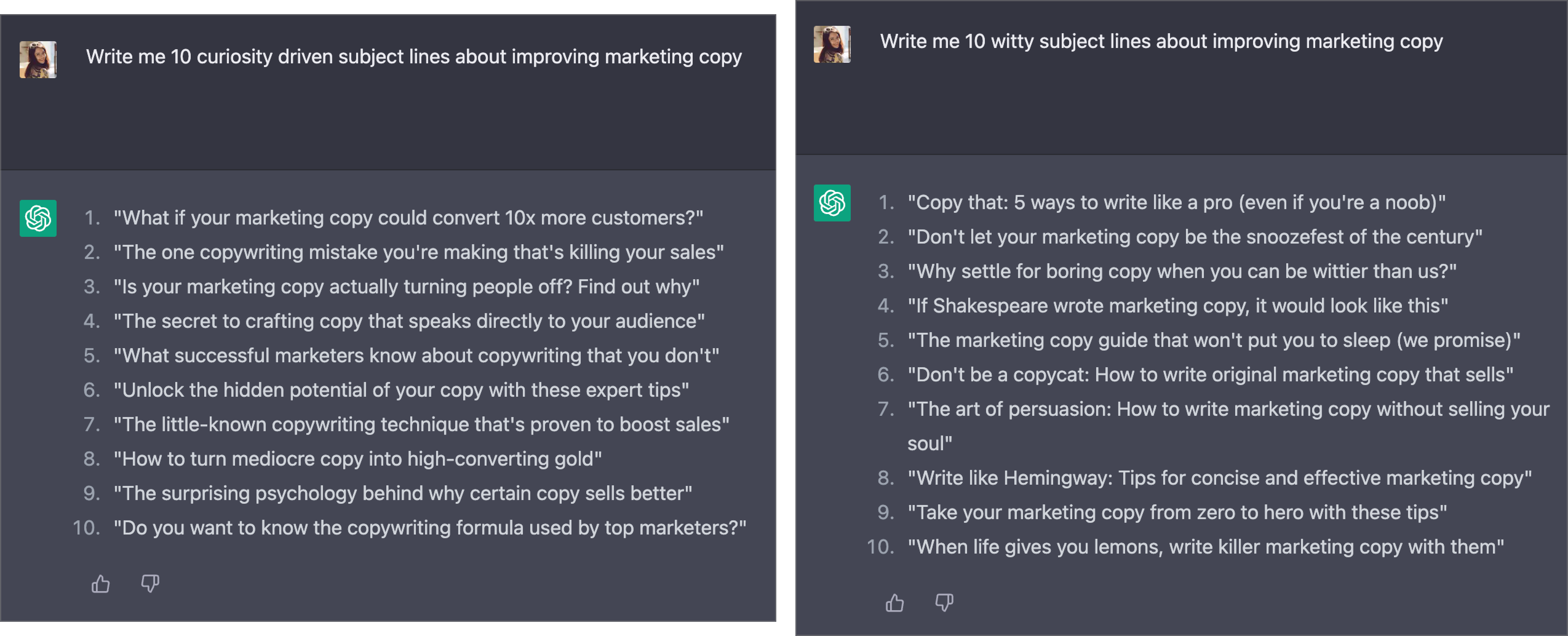
As you can see, the suggestions start to get much more creative, and there are tons of effective subject line styles to choose from, including:
- Urgency and scarcity: Tap into the fear of missing out by adding an element of scarcity (limited availability) or urgency (limited time).
"Only 50 early bird subscriptions left" - Benefit-driven: Convey what benefit the reader will get after reading the newsletter.
"Use these tips to grow your YouTube audience" - Questions: Make a personal connection by inviting readers to answer a question about themselves.
"When was the last time you updated your about page?" - Curiosity-driven: Open-ended subject lines that leave readers curious to know more, like a cliffhanger.
"Copywriting secrets the pros don't want you to know" - Humor/witty: Make readers smile through puns or wordplay.
"If Shakespeare wrote marketing copy, it would look like this" - Tension: Address a pain point in your subject line that readers can relate to.
"Stop wasting time scrolling Twitter"
2️⃣ Create a shortlist & edit
Combine the ideas you vibe with the most from step one, and build a shortlist of no more than five subject lines. Lots of creative input is great for the first step, but now it's time to be ruthless and narrow it down.
With fresh eyes, come back to this shortlist and pick the winning combination of words, edit the subject line to fit with your brand, and align it with the content in your newsletter. AI-generated subject lines are a starting point, so this is where you can add a human touch and include the style and format your readers have come to expect.
3️⃣ Experiment
The science of generating clickable email subject lines goes deep, and you'll find a lot of resources on this topic floating around the web. But the truth is, what works for one publisher might not work for the next. The only way to figure out what makes your audience click is to experiment.
For example, we've learned that Ghost newsletter subscribers (that's you lovely people) seem to open our emails more when we include a "How to" statement in the subject line.
Having some consistency in your subject lines helps promote familiarity when readers see your email in their inbox – but try to leave room to experiment, too!
Interesting stories & ideas 📚
- How the Bot Eat Brain newsletter sold two months' worth of sponsorships in 23 hours, with one Tweet.
- Justin Welsh talks about how easy it is to get caught up in the fear of how our content might be perceived by others.
- The rise of "de-influencing" and why creators are now telling people what not to buy!
- Why are strangers more excited about your ideas than your friends? Tobias van Schneider argues seeking their approval may be a self-destructive cycle, as far as creative projects are concerned.
- Jay Clouse writes about how to find your niche (and why the typical advice is bad)
How to use "dimensionalization" to get better at writing about your work

In the latest issue of Very Good Copy, Eddie Shleyner shares how you can tap into the core benefit your work offers with a technique called dimensionalization.
Now, this may be an obnoxiously long word, but the technique is pretty simple:
- Write down your core benefit
- Then ask "So what?" again and again until you dig into the depths (of your soul?) and land with a benefit that is much more compelling than the first one you wrote down.
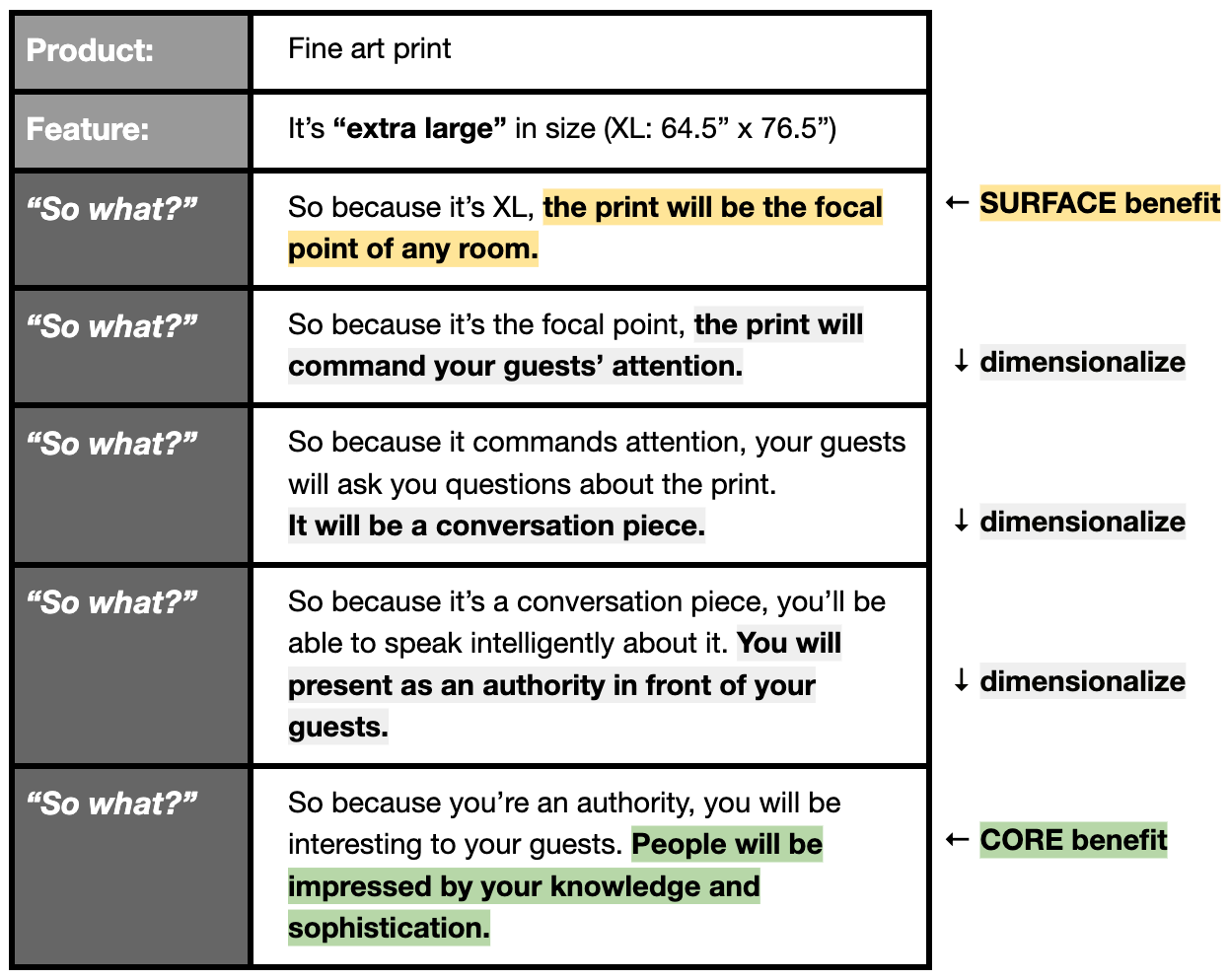
Through this process, you can turn a flat, surface-level benefit into something vivid and fundamental and irresistible, something that taps into your prospect’s very humanity. — Eddie Shleyner
How do you know when to stop asking "So what?". Well, like many questions in marketing, all signs point toward Maslow's Hierarchy of Needs. In other words, when your benefit taps into at least one of the fundamental needs and desires we have as humans, you're onto something.
In the example above, the size of the fine art print is a superficial benefit, compared to the final core benefit, which is psychological — offering self-esteem, social approval, and respect.
This week's challenge (ok, homework) is to give this a try, and let us know what you came up with!
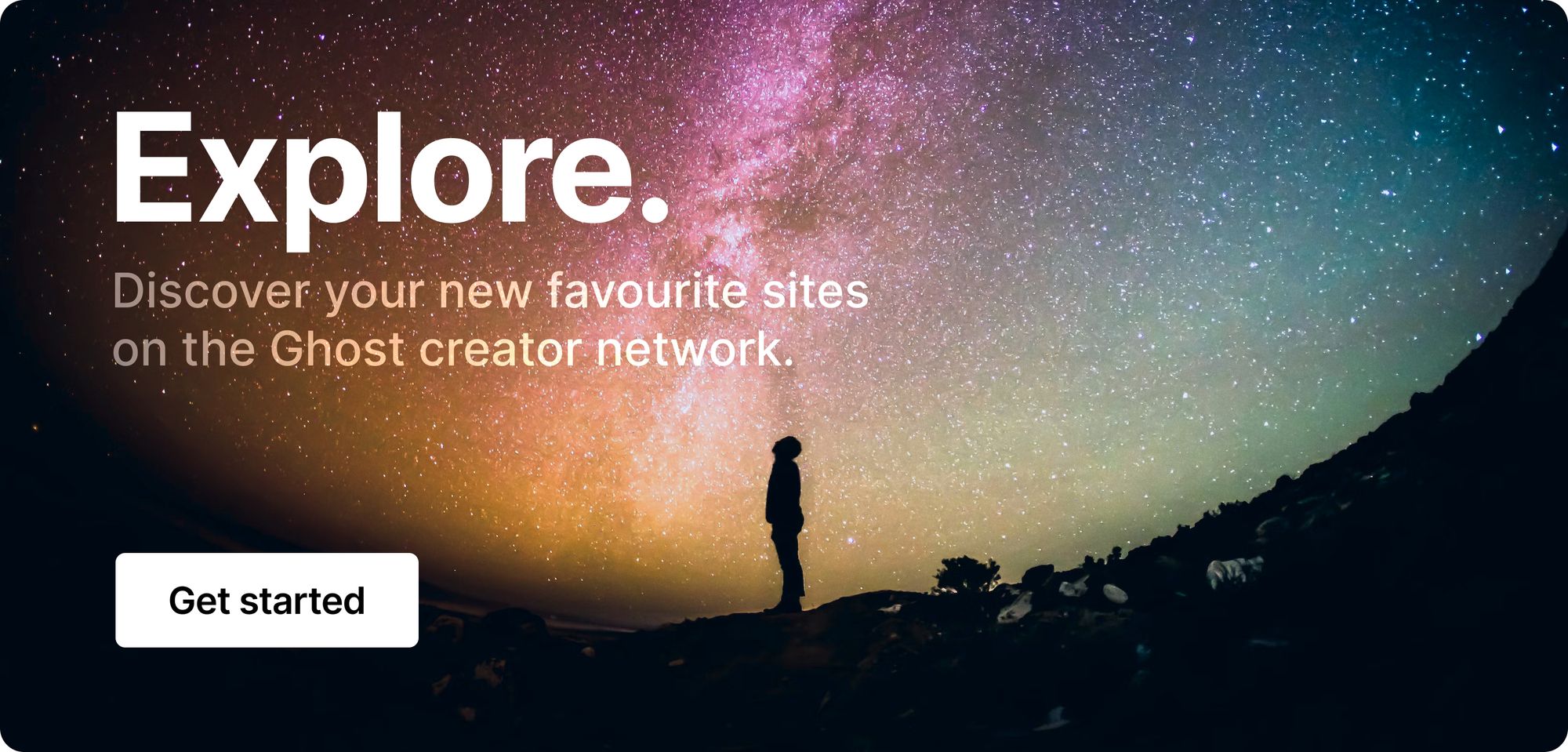
A simple formula for powerful copy

Harry Dry shares incredibly concise and powerful marketing tips on the Marketing Examples website and newsletter, including this stealable formula for crafting marketing copy:
Let's break down this formula as it relates to the primary goal for most content creators, getting new email subscribers:
- Objection handle — The uncomfortable truth is that almost every visitor to your site has reasons they're hesitant to sign up. ("I don't have time for another newsletter", "my inbox is full already", "I'm not sure if this is for me"). Objection handling is where you address these objections directly in your copy.
- Social proof — Something has to be experienced to prove how good it is, and when it comes to consumer decisions, humans naturally look for proof that other people are enjoying what they are about to sign up for. The (social) proof is in the pudding, and it should also be in your marketing copy.
- Actionable outcome — People don't care about what you do, they care about what you can do for them. The actionable outcome is the reason someone should subscribe and the benefits they'd be missing out on if they didn't.
(If you used the dimensionalization strategy above, this is a great time to put your core benefit to work).
This formula serves as a useful template when you're crafting call-to-action copy. Here's an example of the formula in the wild:
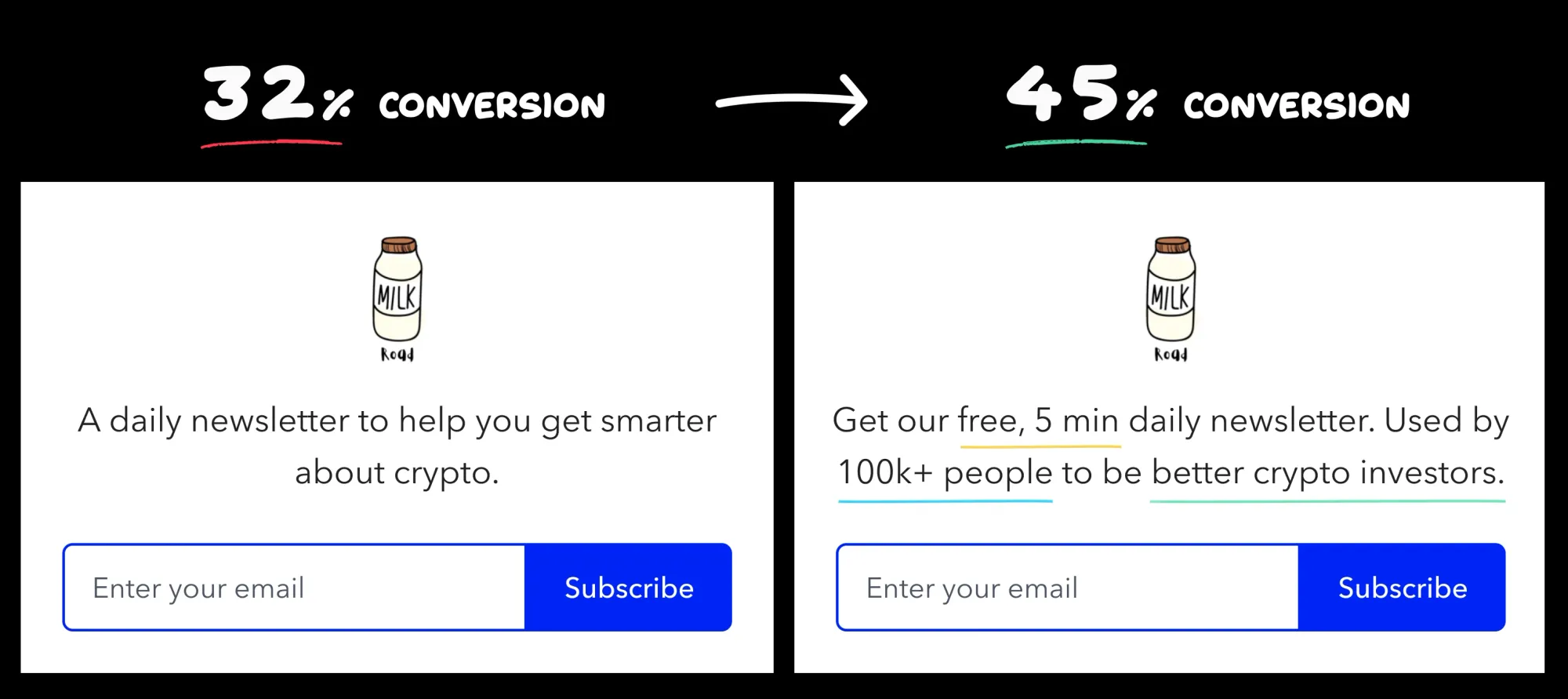
This example demonstrates the formula in a very clear way — but that doesn't mean there's no room for creativity. You can mix it up a little, by changing the order you address each part of the formula, or throw in some extra social proof for good measure 🌶️
For example, the email CTA for Harry's own newsletter looks like this:
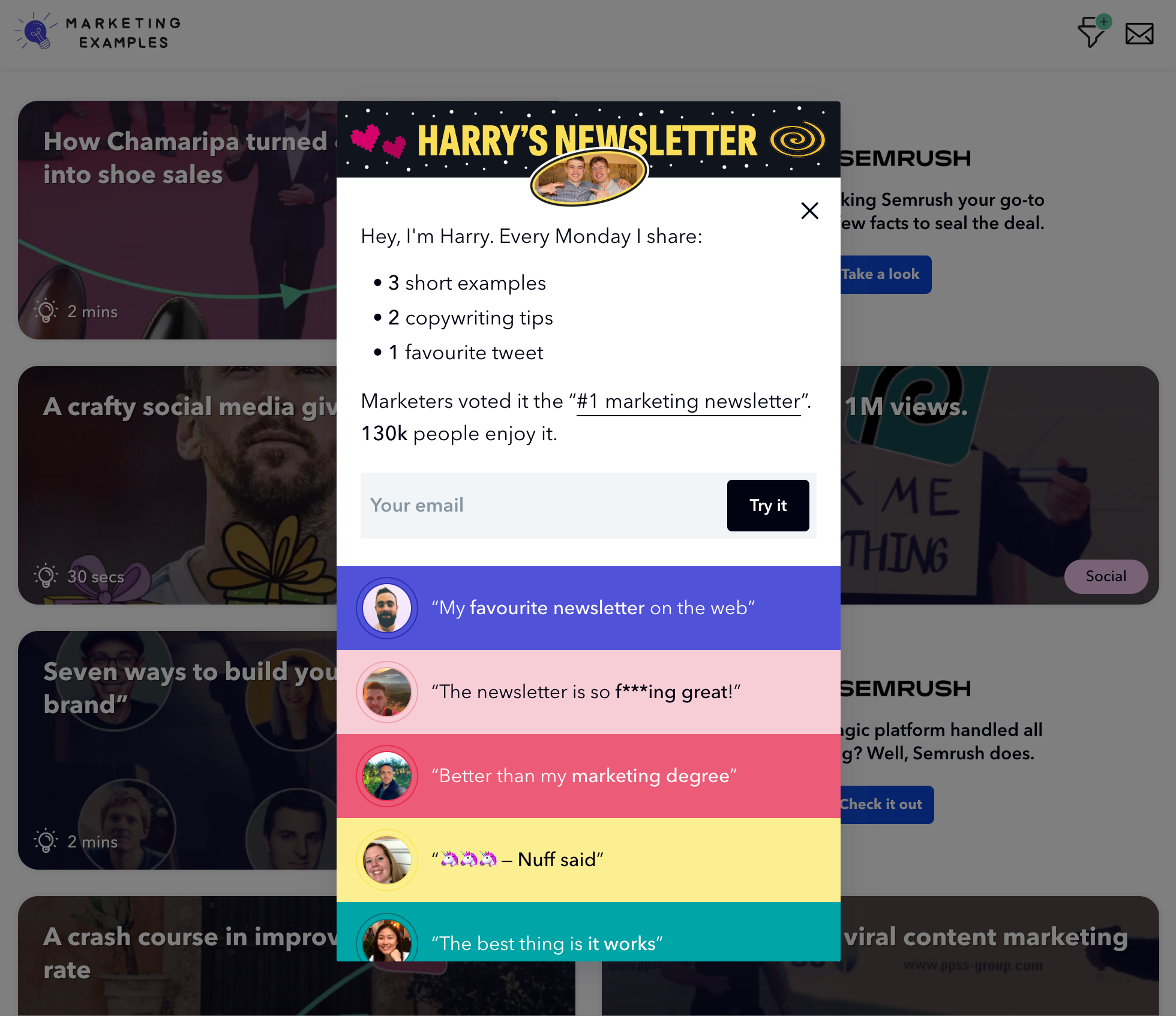
Curator's pick
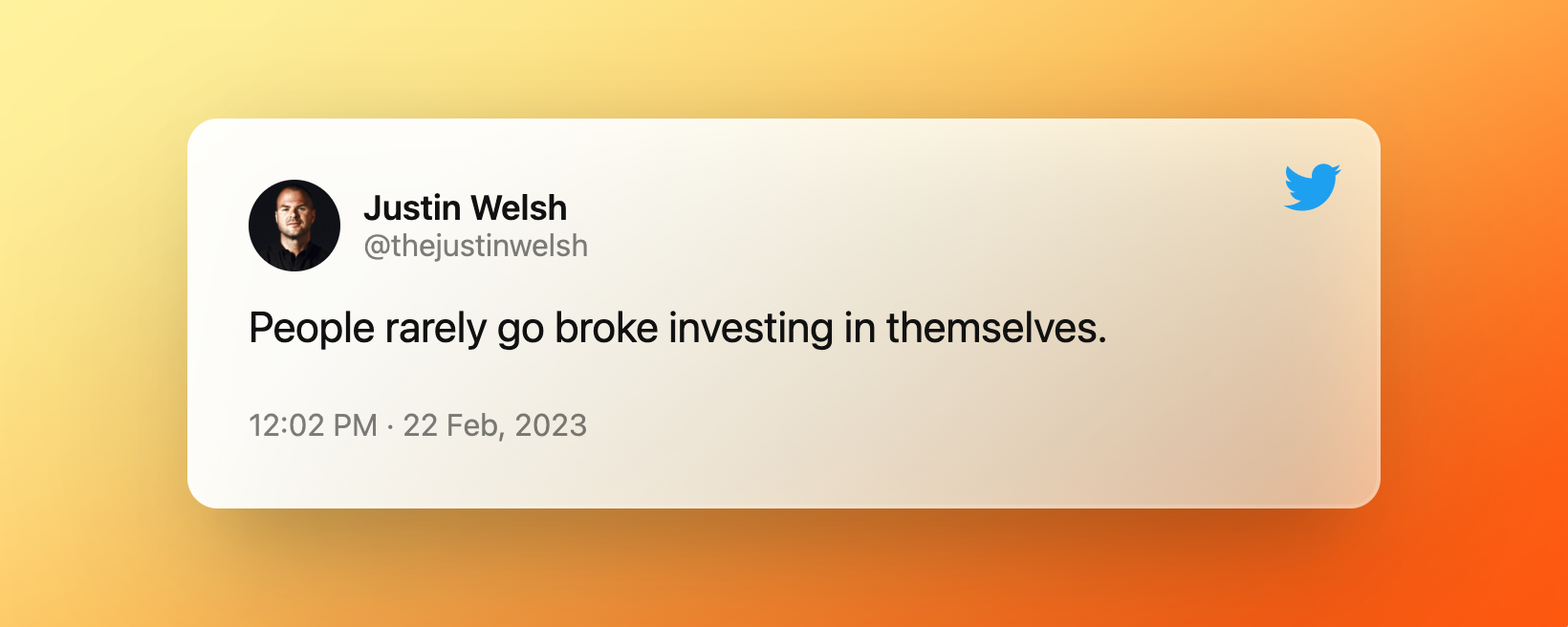
Enjoy this newsletter?
Forward to a friend, sharing is caring.
Anything else? Hit reply to send us feedback or say hello. We don't bite!
Join an invite-only community! Connect with like-minded people who create content professionally — apply here.




